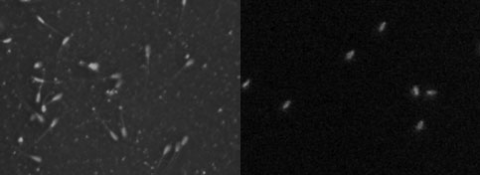The first observations concerning low-temperature preservation of spermatozoa date from 1776, when the Italian physiologist Spallanzani noted that spermatozoa cooled in snow became inactive but could be revived on warming, although, successful cryopreservation protocols date only from the 1950s.
In 1949, the single most important development came with the discovery by Polge, Smith and Parkes that Glycerol could act as a cryoprotectant from spermatozoa.
History of Semen Cryopreservation
1776 – First observations on the effects of freezing temperatures on human sperm
1866 – First banks for frozen human semen suggested
1938 – Sperm survives at temperatures as low as -269°C, and stored at -79°
1949 – Glycerol first used as protective agent for bovine spermatozoa
1953 – “Dry Ice” preservation method developed
1953 – First successful human pregnancy using frozen sperm
1957 – Tyler Medical Clinic/Westwood Cryobank offers freezing of semen
1960 – Sperm frozen and stored using liquid nitrogen
Source: Sherman, “Historical Synopsis of Human Cryobanking,” 1979
Since then, the cryopreservation and artificial insemination have become very frequent in the Assisted Reproduction, both in human and animal.

Frozen semen straws
One of the critical points, especially in the animal field where artificial insemination became the standard, is the use of diluents containing egg yolk or milk, widely used as cryopreservant, despite other not containing any animal products have demonstrated to be cleaner.
Besides, it is easy to find publications expressing that this semen diluents containing egg yolk may pose hygienic risks and are difficult to standardize.
Nevertheless, if the egg yolk diluents is the preferred choice, CASA SCA® has the option to make the analysis of motility and concentration under fluorescence to avoid any interference with these extender particles.

Bull sperm sample containing egg yolk. On the left: brightfield analysis. On the right: Fluorescence analysis with FluoCount
Samples must be stained with FluoCount (Hoechst based fluorochrome) and incubated during 5 minutes to be able to become visible under fluorescence and then can be automatically analyzed.
Bibliography:
Cryopreservation of Mammalian Semen, Mark R. Curry
In vitro and in vivo comparison of egg yolk-based and soybean lecithin-based extenders for cryopreservation of bovine semen. V. A. Aires, K. Hinsch, F. Mueller-Schloesser, K. Bogner, S. Mueller-Schloesser, E. Hinsch
Comparative quality assessment of buffalo (Bubalus bubalis) semen chilled (5°C) in egg yolk- and soya milk-based extenders. A K Singh, V K Singh, B M Narwade, T K Mohanty, S K Atreja
Ms Mercedes Dadín
Biologist- Marketing ManFirst Announcement ISS 2018ager
MICROPTIC S.L.




Leave A Comment